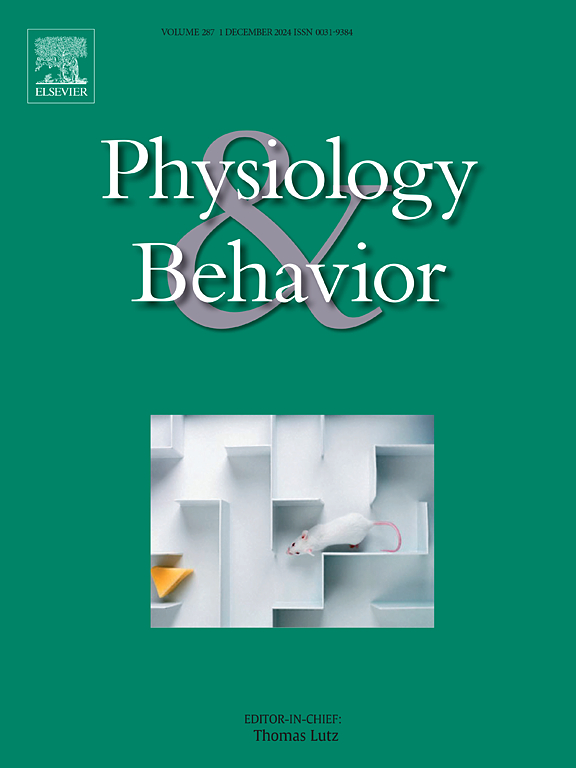Enriched environment prevents hypernociception and depression-like behavior in a psychiatric disorder and neuropathic pain comorbidity experimental condition
IF 2.4
3区 医学
Q2 BEHAVIORAL SCIENCES
引用次数: 0
Abstract
Pain is a multifactorial debilitating condition associated with some psychiatric comorbidities such as generalized anxiety and depression. Concerning pharmacological treatment, which is often inefficient or associated with intense side effects, the physical and social context may be fundamental for patient's health improvement. In this sense, we sought to assess the impact of an enriched environment (EE) on neuropathic pain (NP) and depression comorbid. For this purpose, mice exposed to EE or non-enriched conditions for three weeks were submitted to either a chronic constriction injury (CCI) of the ischiadicus nervus or a sham procedure. After three weeks of EE or non-enriched exposition, allodynia (recorded by von Frey and acetone tests), hyperalgesia (recorded by hot plate test), despair behavioral response (recorded by tail suspension test), and apathy (recorded by sucrose spray test) were evaluated. Mice submitted to CCI procedure showed increased rates of hyperalgesia and allodynia, as well as depression-like behaviors compared to the sham procedure-submitted mice. Exposure to EE significantly increased pain thresholds and significantly diminished depression-related behaviors. These findings suggest that the sensory, physical, and social context can be an extra tool for controlling not only sensory-discriminative pain but also emotional pain-related psychiatric comorbidities, such as depression.
在精神障碍和神经性疼痛共病的实验条件下,丰富的环境可防止高痛觉和抑郁样行为。
疼痛是一种多因素的衰弱性疾病,与一些精神合并症(如广泛性焦虑和抑郁)有关。药物治疗往往效率低下或伴有强烈的副作用,因此生理和社会环境可能是患者健康改善的基础。在这个意义上,我们试图评估富集环境(EE)对神经性疼痛(NP)和抑郁合并症的影响。为此,小鼠暴露于EE或非富集条件下三周,接受坐骨神经慢性收缩损伤(CCI)或假手术。三周EE或非丰富暴露后,评估异常性疼痛(von Frey试验和丙酮试验记录)、痛觉过敏(热板试验记录)、绝望行为反应(悬尾试验记录)和冷漠(蔗糖喷雾试验记录)。与假手术小鼠相比,接受CCI治疗的小鼠表现出痛觉过敏和异常性疼痛的发生率增加,以及抑郁样行为。情感表达显著增加疼痛阈值,显著减少抑郁相关行为。这些发现表明,感觉、身体和社会环境不仅可以作为控制感觉区别性疼痛的额外工具,还可以作为控制与情绪疼痛相关的精神合并症的额外工具,例如抑郁症。
本文章由计算机程序翻译,如有差异,请以英文原文为准。
求助全文
约1分钟内获得全文
求助全文
来源期刊

Physiology & Behavior
医学-行为科学
CiteScore
5.70
自引率
3.40%
发文量
274
审稿时长
47 days
期刊介绍:
Physiology & Behavior is aimed at the causal physiological mechanisms of behavior and its modulation by environmental factors. The journal invites original reports in the broad area of behavioral and cognitive neuroscience, in which at least one variable is physiological and the primary emphasis and theoretical context are behavioral. The range of subjects includes behavioral neuroendocrinology, psychoneuroimmunology, learning and memory, ingestion, social behavior, and studies related to the mechanisms of psychopathology. Contemporary reviews and theoretical articles are welcomed and the Editors invite such proposals from interested authors.
 求助内容:
求助内容: 应助结果提醒方式:
应助结果提醒方式:


